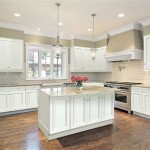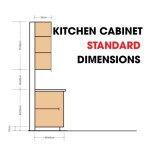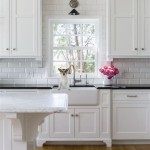How to Design Kitchen Cabinets: Essential Aspects
Kitchen cabinets are a fundamental element of every kitchen, providing storage space, practicality, and aesthetic appeal. Designing them effectively requires careful consideration of various aspects to ensure they meet both functional and visual expectations. Here are some essential aspects to consider when designing kitchen cabinets:
1. Cabinet Layout and Functionality
Determine the layout of your cabinets based on the available space and the workflow within your kitchen. Consider the placement of appliances, sink, and frequently used items to create a functional and efficient workspace. Plan for adequate storage space, including drawers, shelves, and specialized compartments for specific items.
2. Cabinet Style and Finishes
Choose a cabinet style that complements the overall design and feel of your kitchen. Consider factors such as door and drawer styles, hardware, and materials. Select finishes that match your desired aesthetic, whether modern, traditional, farmhouse, or contemporary. Consider using different finishes or colors to create visual interest and break up large expanses of cabinets.
3. Cabinet Materials and Durability
Kitchen cabinets are subjected to regular use and exposure to moisture, heat, and cleaning agents. Choose durable materials that can withstand these conditions, such as solid wood, plywood, MDF (Medium-Density Fiberboard), or melamine. Consider the finishes and coatings used to protect the cabinets from wear and tear.
4. Storage Optimization
Maximize storage space by utilizing various cabinet features. Use adjustable shelves to accommodate items of different heights. Install drawers with dividers or organizers to keep utensils, spices, and small items tidy. Consider using corner cabinets, lazy Susans, or other space-saving solutions to make the most of available space.
5. Hardware and Accessories
Hardware and accessories can enhance the functionality and aesthetics of your kitchen cabinets. Choose handles and knobs that complement the cabinet style and provide a comfortable grip. Consider installing under-cabinet lighting to illuminate work surfaces and create a more inviting ambiance. Add pull-out shelves, spice racks, or other accessories to further enhance convenience and organization.
6. Professional Installation
For optimal results, consider hiring a professional cabinet installer. Skilled installers ensure precise measurements, proper alignment, and secure mounting of the cabinets. They can also assist with creating custom solutions or modifications to meet your specific needs and space constraints.
By carefully considering these essential aspects, you can design kitchen cabinets that not only enhance the functionality and storage capabilities of your kitchen but also create a visually appealing and cohesive space that meets your unique requirements.

Kitchen Cabinet Design Tutorials

How To Design A Traditional Kitchen With Diy Cabinets

Creative Kitchen Cabinets For A Stylish

Tips For Designing A Modern Kitchen Norfolk Bath

Kitchen Wardrobe Cabinet Ideas For Your Home Designcafe

15 Stunning Kitchen Cabinet Designs In Singapore With 5 Essential Tips

Kitchen Cabinet Ideas The Home Depot

Kitchen Layout Templates 6 Diffe Designs

Kitchen Design Elements Using Color Line And Texture

10 Simple Ideas To Update Your Kitchen Cabinets Jenna Sue Design
Related Posts








